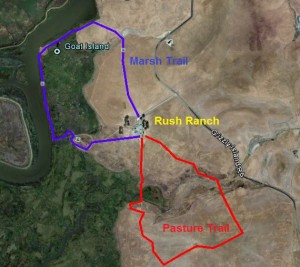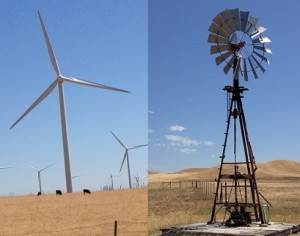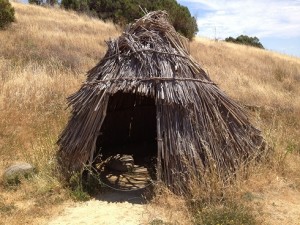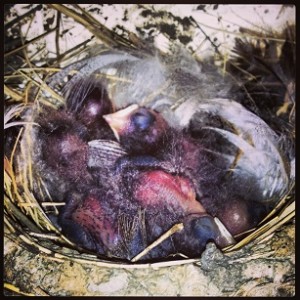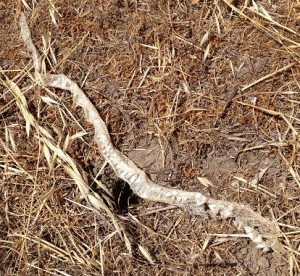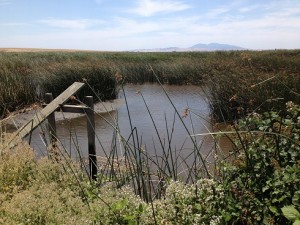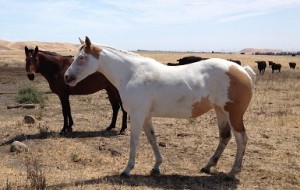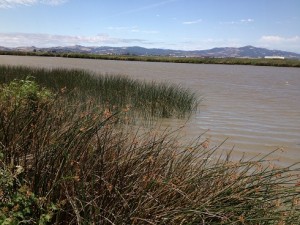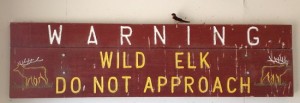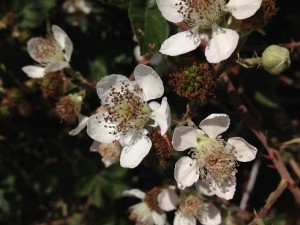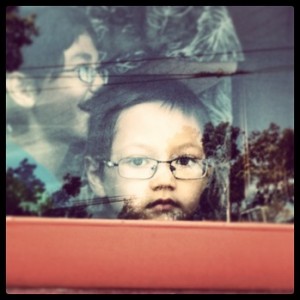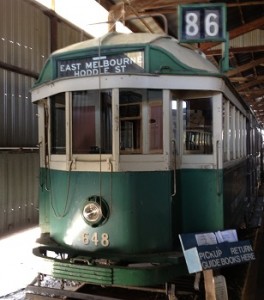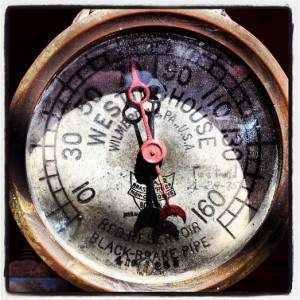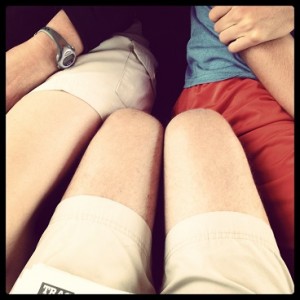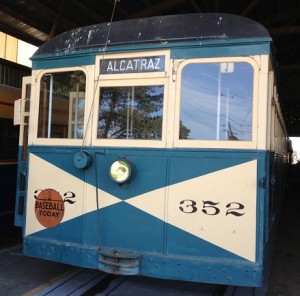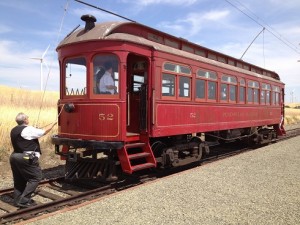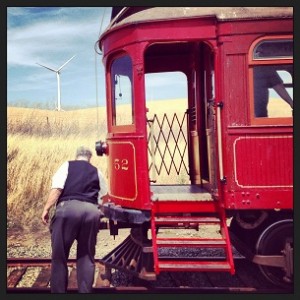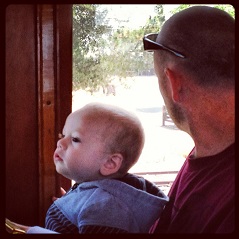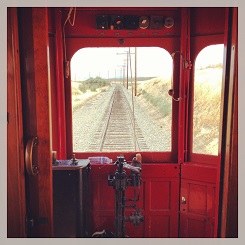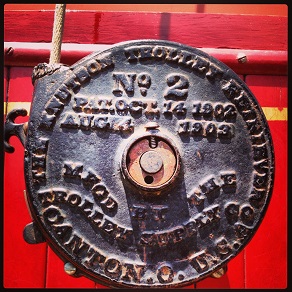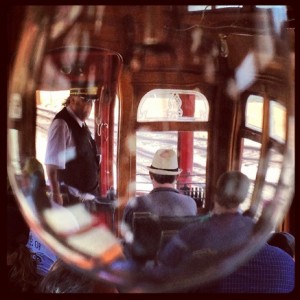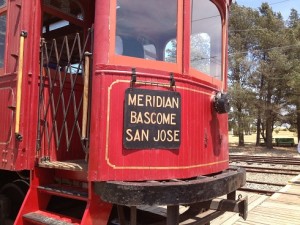We recently planned out a combo pack of a day. First, we hiked around the Suisun Marsh followed by a leisurely trolley ride at the Western Railroad Museum down Highway 12. It was a nice mix of hiking on trails and traveling on rails with a healthy dose of history.
Trails to Rails bring past and present together
I could spend all day at the Suisun Marsh hiking, looking at birds and watching the tidal flows. But that gets a little old for some in the

Looking out the window of history.
family. A nice compromise was hiking at Rush Ranch coupled with a ride on a 100 year old electric street car. Separately, it is difficult to justify a whole day at either location. There is another layer of history and juxtaposition that collides when you visit both in one day: windmills, planes, birds, trains and electricity. Rush Ranch was pioneered before there was electricity, trains were a dream, and migratory birds were all that you saw in the sky.
Travis AFB in the background
Today it is not uncommon to hear the unique whine of a C-17 airplane flying low over Rush Ranch on a training run from Travis AFB. The swallows that dart around looking for food over the marsh with agility envious of any airplane pilot, were present before the big air cargo birds and will probably out last them as well.
Wind for water and electricity
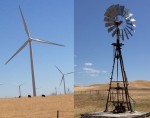
New wind turbine next old windmill.
A not uncommon sight around California in the early years were windmills slowly pumping water for homes and livestock like at Rush Ranch. As electricity was developed and distributed to rural out posts, the quaint water producing windmill fell out of fashion for larger submersible electrical pumps. Now, huge windmills are generating electricity on the windy Montezuma Hills next to old farmsteads.
Sacramento Northern Railway
The new age of electricity ushered in the mass transit possibility of street cars. Even today the sight of an electric trolley car rolling down the tracks in this sparsely populated portion of California looks out of place. But the scenery of wheat fields, cattle and sheep grazing has changed little since the first trolley line rolled through the Montezuma Hills. In a span of five decades, the electric Sacramento Northern Railway was born, flourished and ultimately withered as petroleum became king of personal propulsion.
Western Railway Museum
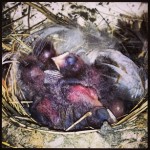
A nest of baby swallows on Grizzly Island
The new wind turbines on the Montezuma Hills tower over the Western Railway Museum tracks and rolling stocking producing the very electricity that brought the trolley’s into existence a century before. We marvel at the 260′ tall windmills and their 125′ long blades turning in the wind just as the early settlers looked on in curiosity at the new electric trolleys headed for a boat to cross the Suisun Bay to San Francisco.
Fresh water, salt water
We shouldn’t forget that water, just like that being pumped out of the ground by the windmill, is the focal point of big projects and fights right up the road in the Delta. There are the hydraulics of pumping the water out of the ground with a windmill, the daily tidal flows around the Rush Ranch and continuous importance of fresh water to all of California.
Rush Ranch hiking
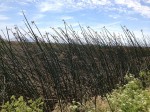
Green tules that will die and become part of the peat soil.
The South Pasture and Marsh Trail hikes are flat an easy. The ecological areas are strikingly diverse from dry land cattle pasture to migratory waterfowl marsh. Both hikes total about four miles. You can combine that with the Suisun Hill trail across Grizzly Island Road to add a couple more miles. For more wildlife viewing, continue down Grizzly Island Road to the Department of Fish and Game Wildlife preserve. Grizzly Island has been mildly developed for some agricultural practices, but it is still shaped by the tidal forces of Suisun Bay.
Nice family adventure
The Western Railway Museum is a short drive down Hiway 12. They have a nice collection of old trolley cars and the admission includes a one hour trip on a refurbished street car. The trip isn’t very exciting, but it is fun every 10 years or so. It’s great for children and history and railroad buffs.
Transportation: horses, trolleys, planes

Horses came up to greet us on the south pasture trail.
As you had walked across the trails used by the Rush Ranch family over a century ago, you now get to plant your butt on seats used by numerous rail passengers. The trolley cars are not glamorous and they can be be cramped when full of people. We get to experience the travelling challenges faced by Californians either around town or on long trips from Chico to San Francisco which was the ultimate length of the Sacramento Northern rail line.
The collision of past and present
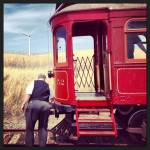
Motor man switches electric boom with wind turbine in back ground.
Half the enjoyment for me is comparing the past to the present. From cattle ranching and pumping water with a windmill to huge cargo planes, wind turbines and old trolley cars. We have already witnessed the technological inventions and applications of several centuries within the last 100 years. The constants are the dwindling natural resources from petroleum, rising sea level and fresh water.
If you like pondering over how our world has changed combined with some hiking and historical street car rides, spending some time in the Suisun area will be worth it. Click thumbnails to enlarge the pictures.
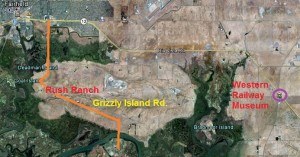
Rush Ranch and the Western Railway Museum are a short distance apart connected by Hiway 12.
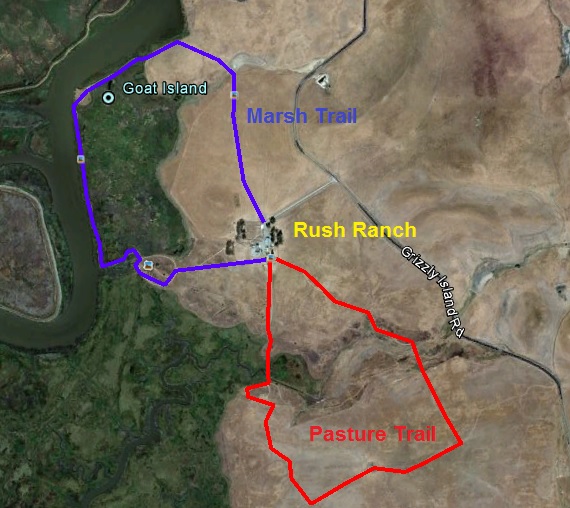
Trails on Rush Ranch


